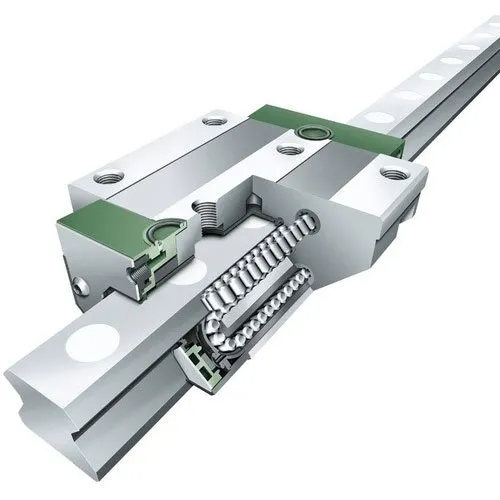Linear Guide Rails and Bearings: Simplifying Motion in Precision Machinery

In the realm of precision machinery and automation, linear guide rails and bearings play an instrumental role. These components enable smooth, accurate movement along a straight line, which is critical in various industrial applications. This article delves into the world of linear guide rails and bearings, exploring their workings, benefits, applications, and selection considerations.
What are Linear Guide Rails and Bearings?
A linear guide rail is a fixed part of a linear motion system, providing a track along which a linear bearing can move in a controlled, straight line. The linear bearing, often in the form of a carriage or block, is the mobile component that slides along the guide rail, with the aid of rolling elements such as balls or rollers.The combination of linear guide rails and bearings forms a linear guide system, which can carry loads and manage the relative motion between two parts of a machine.
How Do They Work?
Linear guide systems work on the principle of rolling friction. The linear bearing, equipped with circulating balls or rollers, moves along the guide rail with minimal friction. This is due to the rolling elements, which reduce the sliding friction that would otherwise occur between the bearing and the rail.The guide rail's surface is typically hardened to withstand the repetitive movement of the bearing, and the system is often lubricated to further reduce friction and wear.
Benefits of Linear Guide Rails and Bearings
Linear guide rails and bearings offer several key advantages in machinery and automation:<strong>1. High Precision:</strong> Linear guide systems provide accurate and repeatable linear motion, making them ideal for precision applications.<strong>2. Load Capacity:</strong> They can carry high loads while maintaining smooth and precise motion.<strong>3. Efficiency:</strong> The reduced friction in linear guide systems leads to higher mechanical efficiency compared to sliding friction systems.<strong>4. Long Service Life:</strong> With proper maintenance and lubrication, linear guide systems can have a long service life, even under continuous operation.
Applications of Linear Guide Rails and Bearings
The versatility and precision of linear guide systems make them suitable for a wide range of applications:<strong>1. CNC Machines:</strong> Linear guide systems are essential in CNC machines, where they guide the movement of machine parts with high precision.<strong>2. Robotics:</strong> In robotics, linear guide systems enable precise, controlled movement of robotic components.<strong>3. Medical Devices:</strong> They are used in various medical devices, such as medical imaging systems and automated laboratory equipment.<strong>4. Material Handling:</strong> Linear guide systems are used in conveyor systems and other material handling equipment for smooth, controlled movement.
Choosing the Right Linear Guide Rails and Bearings
When selecting a linear guide system, several factors need to be considered:<strong>1. Load Capacity:</strong> The guide system should have the capacity to handle the maximum load applied to it.<strong>2. Precision Requirements:</strong> The required precision of movement will determine the type and quality of the guide system needed.<strong>3. Environmental Conditions:</strong> Factors like temperature, humidity, and dust can impact the performance and lifespan of the guide system.<strong>4. Speed and Acceleration:</strong> The system should be capable of handling the operational speed and acceleration without compromising performance or lifespan.
Conclusion
Linear guide rails and bearings are fundamental components in the world of precision machinery and automation. By enabling smooth, controlled linear motion, they contribute to the efficiency, accuracy, and reliability of numerous industrial applications. Understanding their workings, benefits, and selection considerations helps in making informed choices when designing or upgrading machinery. As technology advances, we can expect even more refinements and innovations in linear guide systems, further enhancing their contributions to the industrial world.



